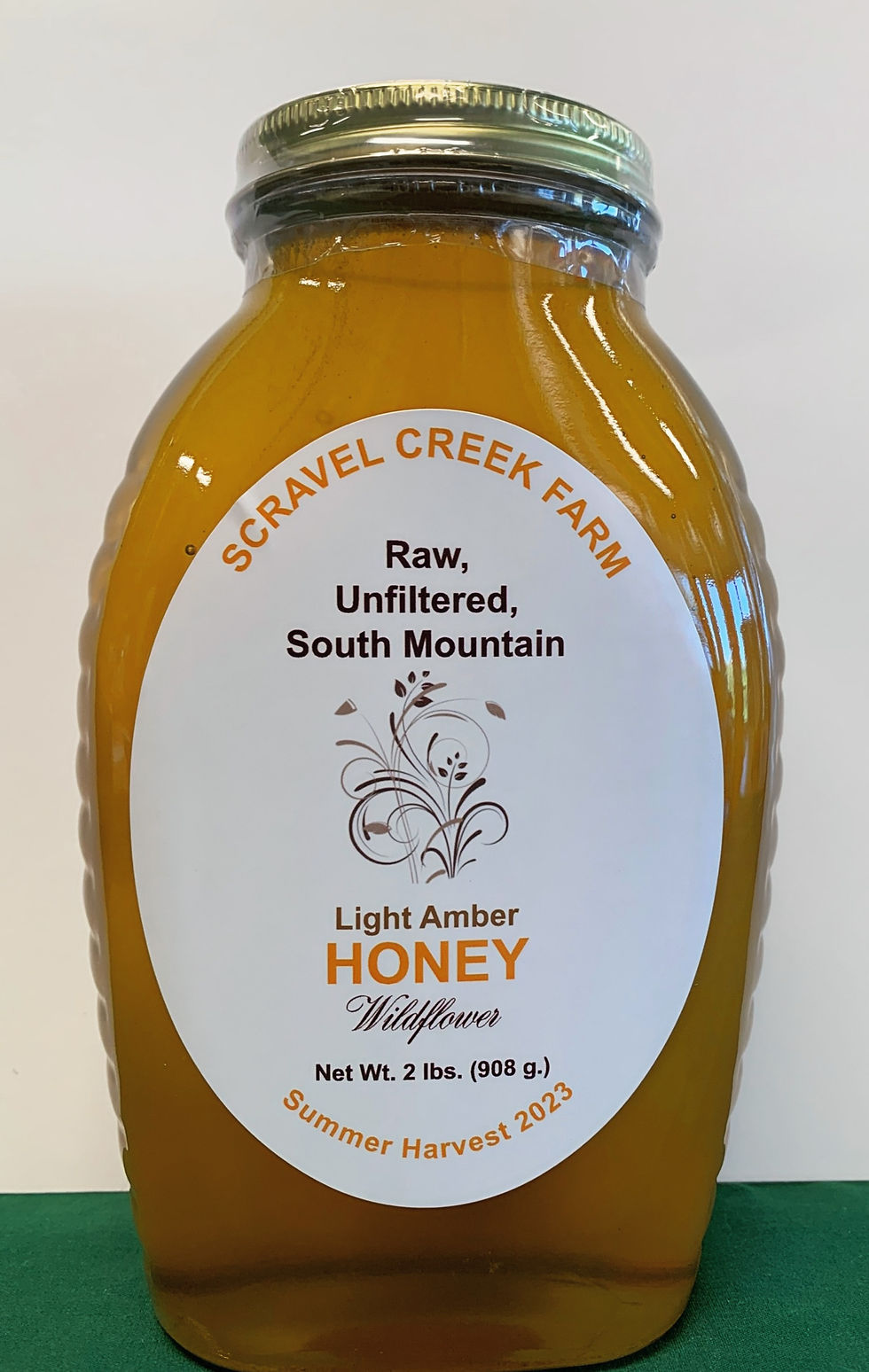Our honeys start as nectars from blossoms in nearby fields and woodlands. Here on South Mountain, our nectar flow lasts for little more than two months a year, its' peak season extending from mid-April through mid-June. Variable weather, including shifts in our native microclimate, influences nectar yields for each year's harvest. Accordingly, fluctuations in the tastes, colors, and textures of our final products are to be expected, and they do occur from one season's harvest to the next. For this reason, we include an annual harvest date on each of our jars, marking contents as belonging to a specified vintage. Our honeys echo a medley of flavors flower-sourced from Russian olives, black locusts, tulip poplars, brambles, and clovers. Along with these sources, an eclectic mixture of local wildflowers contributes complexities to their tastes.
Scravel Creek Farm markets only raw, unfiltered honey. Conglomerate manufacturers, by contrast, pasturize and force-filter their products; and although these procedures furnish them with a uniform transparency and a diminished tendency to crystallize, their flavors can get compromised owing to the heat used in pasturization. Raw honeys, on the other hand, appear variably translucent, their hazy texture springing from small granules of edible pollen, beeswax, and propolis; propolis being a plant resin mixed with wax, used by bees for sealing open spaces in their hives.
Please note that sooner or later, all honeys will crystalize. This does not mean that the honey is spoiled or unsafe to eat. To reliquify crystalized honey, simply heat a pan of water to 150 degrees F or 65 degrees C. Remove the water bath from the heat and place the jar of crystalized honey in the heated water until it is liquified.
Do not refrigerate honey and do not feed honey to infants younger than one year of age.
Light Amber Honey
As its name implies, our light-amber honey appears lighter than our amber variety. This contrast stems from differences in the types of nectar from which they were formed.
Our light-amber honey features a delicate backgound, leaving its primary foreground sensation to the sugars. On the other hand, our amber honey sports a bolder, more nuanced profile in the foreground, relegating its sweetness to a less conspicuous role. Moreover, darker honies are typically thicker than lighter-colored varieties, and they generally carry higher concentrations of antioxidants, minerals, and enzymes.
In the end, both varieties represent quality products, and selecting one over the other is merely a matter of personal preference.

